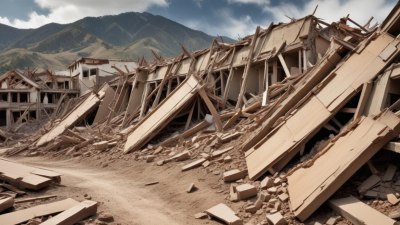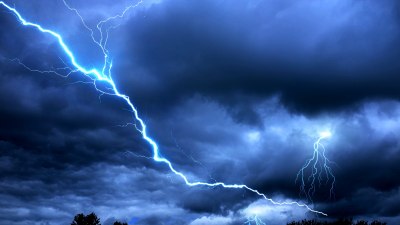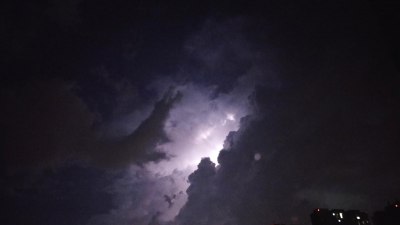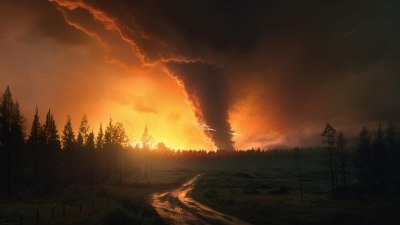The Link Between Weather and Earthquakes
Explore the intriguing relationship between weather patterns and seismic activity.

This image was created with the assistance of Freepik
Throughout history, the forces of nature have fascinated and mystified humankind. Among these natural phenomena, earthquakes are some of the most destructive and unpredictable events. While the primary causes of earthquakes stem from tectonic plate movements, there is growing interest in understanding how weather conditions might influence seismic activity. This article delves into the intricate relationship between weather phenomena and earthquakes, examining scientific theories, case studies, and the implications of this connection.
To grasp the potential links between weather and earthquakes, one must first understand the mechanics of how earthquakes occur. Earthquakes primarily originate from the slipping of tectonic plates along faults in the Earth's crust. These movements can be triggered by several factors, including the buildup of stress along fault lines and magmatic activity beneath the Earth’s surface. The occurrence of these geological shifts is typically independent of weather, with plate tectonics being the driving force behind most seismic events.
Understanding Earthquake Mechanisms
The process of an earthquake begins with stress accumulation in the crust due to tectonic forces. Over time, this stress becomes too great, resulting in a sudden release of energy, manifested as tremors. The point within the Earth where this rupture occurs is known as the focus, while the surface location directly above it is called the epicenter. Most earthquakes occur along plate boundaries, which can be classified into three main types: convergent, divergent, and transform boundaries, each exhibiting distinct geological behaviors and patterns.
While earthquakes are primarily linked to geological factors, some researchers propose that weather conditions, particularly extreme weather events, can contribute to seismic activity. The theory suggests that changes in surface stress due to heavy rainfall, snowfall, or rapid temperature fluctuations might play a role in triggering small to moderate earthquakes.
Scientific Theories on Weather Inducing Earthquakes
The notion that weather conditions can influence seismic activity is rooted in the concept of pore pressure in the Earth’s crust. When heavy rainfall occurs, water seeps into the ground, increasing the pore pressure in the rocks and sediments. This increased pressure may reduce the friction holding fault lines together, potentially allowing them to slip more easily. Similarly, sudden melting of snow can lead to rapid changes in the load on the Earth’s crust, altering stress distributions along fault lines.
Various studies have analyzed these relationships quantitatively. For instance, researchers have observed that regions experiencing heavy rainfall seem to exhibit an uptick in seismic activity. In 2014, a study published in the journal 'Geophysical Research Letters' examined the relationship between heavy rain and increased earthquake activity in the Himalayas. The findings showed a significant correlation between rainfall and seismic events, leading researchers to consider the potential influence of weather on earthquake frequency.
Case Studies and Observations
One of the more compelling case studies affirming the link between weather and seismic activity involves the 2010 earthquake in Haiti. After months of heavy rain leading to flooding and increased pore pressure, a magnitude 7.0 quake struck, resulting in widespread devastation. Researchers noted that the heavy rainfall before the event may have played a role in reducing friction along existing faults in the region.
Another notable example occurred in California, where researchers investigated the relationship between rainfall and the frequency of minor earthquakes, specifically in the San Andreas Fault region. The study revealed that after significant rain events, there was a noticeable increase in low-magnitude tremors. However, the relationship noted was complex, suggesting that while some rain-induced shaking could occur, it didn't necessarily lead to larger, destructive quakes.
Geological Context Matters
While weather conditions can influence seismic activity, the underlying geological context remains critical. Areas with preexisting geological instability, such as those situated near major fault lines, are more likely to experience greater fluctuations in earthquake occurrence due to surface changes. Conversely, regions with stable geological structures may show minimal correlation between weather and seismic activity.
Additionally, the timing of weather events plays a significant role. For example, prolonged wet conditions may accumulate pore pressure gradually, while sudden rainstorms might trigger more immediate responses in the crust, leading to an uptick in seismic events. This temporal aspect further complicates the narrative, as it suggests that not all heavy precipitation will have the same effect over time.
Climate Change and Its Impact on Earthquakes
As climate change continues to manifest through extreme weather patterns, scientists are increasingly interested in understanding its potential influence on geological activity. Rising sea levels, increased frequency of heavy rainfall, and alterations in land use can all contribute to changes in stress distributions across the crust. In turn, these shifts could lead to a rise in seismic activity as geological systems adjust to these new environmental conditions.
For example, the melting of glaciers due to global warming could relieve stress on fault lines in areas previously compressed under heavy ice, potentially leading to an increase in seismic events. Some researchers believe that monitored patterns in glacial melting and subsequent seismic activities in regions like Alaska and Iceland could offer valuable insights into this phenomenon.
Earthquake Preparedness Amid Weather Fluctuations
Given the potential connections between weather and earthquakes, it is crucial to focus on preparedness and resilience against these dual threats. Communities prone to both severe weather events and seismic activity should consider integrating disaster preparedness plans that address both types of natural disasters. By educating residents on earthquake safety protocols while concurrently ensuring infrastructure can withstand extreme weather, cities might mitigate the impacts of both phenomena.
Programs that incorporate monitoring systems for both weather changes and seismic activity could enhance predictive capabilities, enabling communities to respond swiftly during critical situations. Early warning systems that inform residents of potential earthquakes or severe weather alerts can be invaluable in saving lives and minimizing damage.
In conclusion, while earthquakes are primarily products of geological forces, the potential influence of weather conditions cannot be overlooked. The nuances of how weather interacts with seismic activity are still being unraveled, but the growing body of research demonstrates that extreme weather events can have measurable effects on the frequency and intensity of earthquakes. As scientists continue to explore these intricate connections, it becomes increasingly important for communities to be aware of the potential risks posed by the interplay between weather and geological factors. By fostering preparedness and resilience, we can better navigate the challenges posed by nature's wrath.











